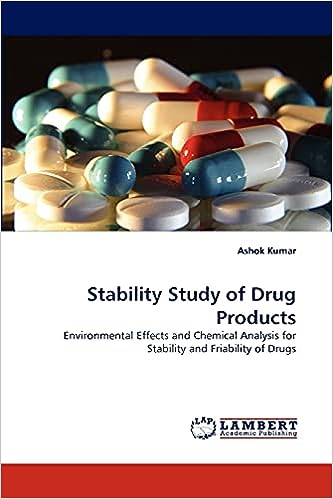Understanding PIC/S Guidelines for GMP in Stability Testing
Introduction
Stability testing is a critical component of pharmaceutical development and manufacturing, ensuring that products maintain their quality, safety, and efficacy throughout their lifecycle. The Pharmaceutical Inspection Co-operation Scheme (PIC/S) plays a significant role in harmonizing Good Manufacturing Practices (GMP) for stability testing globally. With over 50 member countries, PIC/S provides a unified framework to ensure consistent quality in pharmaceuticals, bridging regulatory gaps across regions. This article explores the key aspects of PIC/S guidelines for GMP in stability testing and their impact on the pharmaceutical industry.
What
PIC/S is an international organization aimed at promoting the harmonization of GMP standards in the pharmaceutical industry. Its guidelines align with globally recognized frameworks, such as the ICH stability guidelines, while addressing unique regulatory needs of member
states. PIC/S guidelines are widely adopted in countries like Australia, Canada, the EU, and the U.S., facilitating consistent quality standards in stability testing.Core Principles of PIC/S Guidelines for GMP in Stability Testing
1. Quality Assurance and Risk Management
PIC/S guidelines emphasize a comprehensive approach to quality assurance in stability testing. This includes:
- Establishing robust quality systems to manage stability programs.
- Applying risk management principles to prioritize testing and address potential quality issues.
- Ensuring traceability and accountability throughout the testing process.
2. Compliance with GMP Standards
Stability testing under PIC/S guidelines must adhere to GMP principles, which include:
- Using validated analytical methods to assess product stability.
- Ensuring cleanliness and preventing contamination in testing facilities.
- Maintaining detailed documentation of testing procedures and results.
These practices ensure the reliability and reproducibility of stability data.
3. Alignment with ICH Guidelines
PIC/S guidelines align with ICH Q1A(R2) and related stability testing frameworks. This alignment includes:
- Storage conditions for different climatic zones, such as Zone II (25°C / 60% RH) and Zone IVb (30°C / 75% RH).
- Requirements for long-term, accelerated, and intermediate stability studies.
- Emphasis on photostability testing as per ICH Q1B.
4. Focus on Data Integrity
Data integrity is a cornerstone of PIC/S guidelines. Manufacturers must ensure:
- Accurate and complete recording of stability data.
- Secure storage of electronic and physical records to prevent tampering.
- Audit trails to track changes and updates to stability data.
These measures enhance transparency and build trust in stability testing processes.
5. Ongoing Stability Studies
PIC/S guidelines mandate ongoing stability studies for marketed products. This includes:
- Testing production batches to confirm consistency over time.
- Reassessing stability in response to changes in formulation, manufacturing, or packaging.
Ongoing studies ensure that products remain compliant with quality standards throughout their shelf life.
Impact of PIC/S Guidelines on Pharmaceutical Stability Testing
1. Harmonized Global Standards
By aligning GMP practices across member countries, PIC/S guidelines reduce variability in stability testing requirements. This harmonization facilitates international trade and regulatory submissions, saving time and resources for manufacturers.
2. Improved Product Quality
Adhering to PIC/S guidelines ensures that stability testing programs are scientifically robust and reliable, enhancing the overall quality of pharmaceutical products.
3. Streamlined Regulatory Approvals
Comprehensive stability data generated under PIC/S guidelines simplifies the approval process in multiple markets, enabling faster access to global markets.
4. Enhanced Data Reliability
By emphasizing data integrity and GMP compliance, PIC/S guidelines ensure that stability data is accurate, reproducible, and suitable for regulatory submissions.
Challenges in Implementing PIC/S Guidelines
While PIC/S guidelines offer significant benefits, manufacturers may encounter challenges during implementation:
- Resource-Intensive Compliance: Implementing GMP-compliant stability programs requires investment in equipment, personnel, and infrastructure.
- Complex Data Management: Handling large volumes of stability data across multiple products and regions can be daunting.
- Varying Regional Interpretations: Differences in how member countries implement PIC/S guidelines may complicate compliance efforts.
Best Practices for Complying with PIC/S Guidelines
To successfully implement PIC/S guidelines for GMP in stability testing, manufacturers should adopt the following best practices:
- Develop a Robust Quality System: Establish clear processes and responsibilities for managing stability programs.
- Invest in Advanced Technology: Use automated systems for monitoring stability chambers and managing data.
- Train Personnel: Provide comprehensive training on GMP principles and PIC/S requirements.
- Validate Equipment and Methods: Ensure that stability chambers and analytical methods meet regulatory standards.
- Engage with Regulatory Experts: Collaborate with consultants or regulatory agencies to navigate complex requirements effectively.
Emerging Trends in Stability Testing with PIC/S
Several trends are shaping the future of stability testing under PIC/S guidelines:
- Digital Transformation: The adoption of electronic systems for data management improves efficiency and transparency.
- Predictive Analytics: Advanced modeling tools forecast stability trends, reducing the reliance on long-term studies.
- Focus on Sustainability: Eco-friendly packaging and optimized testing protocols are gaining traction, aligning with global environmental goals.
- Global Harmonization: Efforts to integrate PIC/S guidelines with ICH and WHO standards are reducing regional disparities.
Conclusion
PIC/S guidelines for GMP in stability testing provide a robust framework for ensuring pharmaceutical quality and consistency across global markets. By emphasizing quality assurance, data integrity, and alignment with international standards, these guidelines streamline regulatory submissions and enhance product reliability. While implementation can be resource-intensive, adopting best practices and leveraging technological advancements can help manufacturers navigate challenges and achieve compliance. As the pharmaceutical industry evolves, PIC/S guidelines will continue to play a pivotal role in shaping the future of stability testing.
